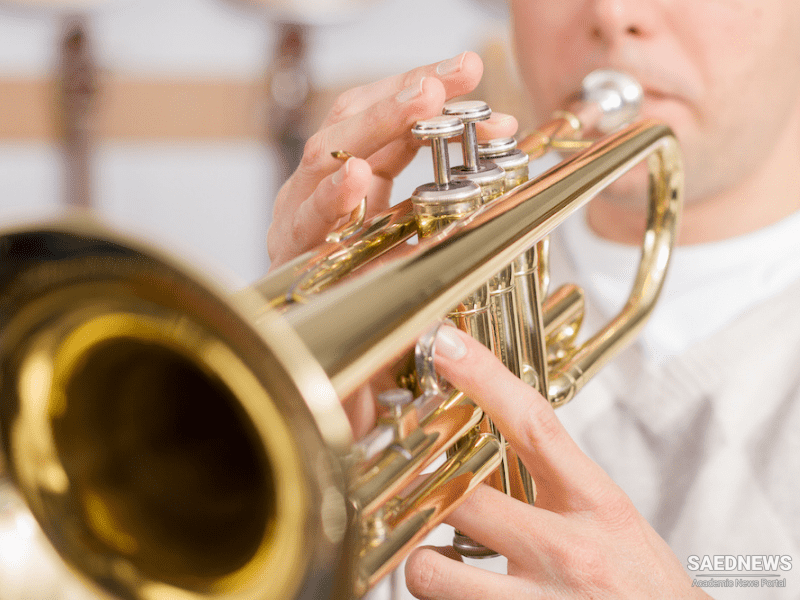The Greeks had only a straight trumpet that they called sálpinx, while the Roman name was tuba. It was closely connected with the trumpets of the ancient Assyrians, Egyptians and Jews, and the initial s+vowel indicates a pre- Hellenic origin of the name too. Generally, however, it was longer than those ancient ones. The only Greek trumpet preserved was recently acquired by the Museum of Fine Art in Boston.
Its tube is made in thirteen sections of ivory neatly fitting into one another, and strengthened at the joints by bronze rings; a long funnel-shaped bell is made of bronze; the mouthpiece is only slightly enlarged without being cup-shaped. As the trumpet is one and fifty-seven centimeters long it must be an alto with a note between f and g as the lowest available tone. The curator, Mr. L. D. Caskey, assigns it to the second half of the fifth century B.C.
Roman tubas, chiefly used to give trumpet calls in the army, were simpler, made entirely of bronze with an evenly conical bore, a slightly expanding bell and a mouthpiece of either horn or bronze. Their average length was about four feet. A few specimens have been preserved, and most of them seem to have been military instruments. The pressure in blowing must have been considerable. On some representations of trumpeters the free hand is on the back of the head; a chain, attached to the bell, might have been pulled to allow the player to brace his lips more firmly against the mouthpiece, and we even find the mouth-band of oboists used with the trumpet.
The sound is said to have been harsh: “The loud trumpet’s brazen mouth from far With shrilling clangor sounds th‘ alarm of war” (Iliad, 18). Aeschylos, in the Eumenides, calls the salpinx diátoros, ‘yelling,’ and Roman authors designate the sound of the tuba as horribilis, raucus, rudis or terribilis.
Besides the straight trumpet the Roman army had a hooked trumpet that they called lituus, a long, slender, bronze tube curving upward at the end to form the bell. Its prototype was obviously a cane or tube of wood stuck into a cowhorn which then formed the bell. In bronze civilizations the combined form of two natural objects was replaced by a homogeneous bronze trumpet in one piece, which at first showed its composite origin but in its later form had lost all vestiges of the original components. The original form still exists in Ethiopia and the Burmese hinterland; some of the oldest Irish kárnykes, kept in the British Museum and in the Irish Academy at Dublin, show the earlier stage of the hooked bronze trumpet.
A similar development in the east is marked by the hooked trumpet carved on the temple at Angkor Vat in Cambodia (c. 1100 A.D.), and the modern Chinese trumpet, cha chiao. Later on, the former combination of a tube and a horn became less obvious, and the tectonic shape was replaced by a fantastic design; the bell had the form of a dragon’s head with open mouth and a crest reaching to the middle of the tube. This was the typical Celtic karnyx described by the ancient writers and also carved on the triumphal arch for Emperor Hadrian (113 A.D.) and on Roman, Gallic and Britannic coins. Some Roman litui had a bell that recalled the Celtic dragon head, but the usual and final form of the lituus was undecorated.
Preserved specimens are conical and short (seventy-eight and seventy-nine and five-tenths centimeters long); their pitch must have been a seventh above that of our bugles. The lituus is consequently designated as acutus or oxýphnos by Roman and Greek authors, its sound as stridor, ‘shriek,’ and strepens, ‘bray.’


 Mahalia Jackson
Mahalia Jackson














































